Pakkawood, a term you might stumble upon while exploring Japanese knives, is more than just a catchy name. It’s a blend of wood and resin, engineered to be resilient and resist hard-wearing use. This composite material has found its way into various applications, primarily in kitchen utensils like knife handles.
Pakkawood is a composite material made from wood and resin, designed for durability and resilience. It’s highly resistant to heat and moisture, making it an ideal material for kitchen utensils, especially knife handles. Often used in Japanese knives, Pakkawood has become a preferred choice for its hard-wearing characteristics.
Pakkawood Composition and Manufacturing
Pakkawood’s creation is a fascinating blend of art and science. It’s not a naturally occurring wood but a composite material engineered from wood and resin to create a new substance with special characteristics and purposes.
Manufacturing Process
The manufacturing process of Pakkawood begins with submerging the wood veneer in resin and subjecting it to intense heat. This bonds the ingredients together and fuses multiple layers in a thermosetting process. The industrial process was first patented in Japan by Toshiaki Oishi in 1969.
Natural wood is prone to splitting, chipping, and warping, but Pakkawood, a pressure-treated composite material, is largely resistant to these common disadvantages. It’s made from hardwood veneers like plywood, infused with a plastic resin to create a wood/resin composite material. The initial plywood is vacuumed to remove all moisture, and then the multiple layers are glued together with a phenolic thermoset resin under high pressure.
The result is a material replicating the natural wood effect while eliminating many of the disadvantages of natural wood. It can be dyed to replicate various colors or designs, adding to its appeal.
Why Do Japanese Knives Use Pakkawood?
Japanese knives, known for their heavy-duty and repeated use, require durable and long-lasting materials. Pakkawood fits the bill perfectly. It’s hard-wearing and resilient, designed to last just as long as the blade material. Traditional wooden handles were prone to splitting and rotting, but Pakkawood has overcome these challenges.
The ability to manipulate Pakkawood’s design to create various colored handles adds to its attractiveness. It can mimic natural wood colors like oak and chestnut or be dyed to create any desired color. The extensive polishing and sanding during manufacturing give the final product a gloss finish, which is scratch-resistant.
Safety and Durability of Pakkawood
Pakkawood, a composite material made from wood fibers and phenolic resins, is renowned for its safety and durability. Its dense and rugged nature makes it an ideal choice for kitchen applications, especially in knife handles.
Is Pakkawood Safe to Use?
Yes, Pakkawood is completely food safe. It’s made from a combination of natural hardwood and food-safe phenolic resin, which is incredibly heat-resistant. The fact that Pakkawood is dense and water-resistant makes it impervious to molds and unsusceptible to bacteria, a significant advantage over traditional wooden knife handles and cutting boards.
Is Pakkawood Durable?
Pakkawood’s durability is one of its standout features. Unlike natural, unprocessed woods, it won’t crack, split, or warp. Its waterproof nature makes it ideal for kitchen utensils, providing a long-lasting solution for those who prefer the aesthetic appeal of wood without the drawbacks.
Is Pakkawood Food Safe?
Yes, Pakkawood is food safe. Its resistance to bacteria and molds makes it one of the safest handle materials available. It’s as resistant, if not more impervious to molds and bacteria, as solid plastics and polymers, yet retains the aesthetic advantage of natural wood.
Is Pakkawood Toxic?
Pakkawood is not toxic. It’s made from natural wood fibers and phenolic resin, known for its strength and resistance to melting. This combination ensures that Pakkawood is safe for use in kitchen environments where it’s often exposed to high heat.
Care and Maintenance
Although Pakkawood is incredibly durable, it requires proper care to maintain its integrity. It’s not dishwasher safe; soaking or completely submerging Pakkawood handled utensils should be avoided. Hand washing quickly with mild soap and drying with a soft towel is best for cleaning Pakkawood. Occasional application of mineral or coconut oil can help maintain its sheen and luster.
Pakkawood Products and Usage
Pakkawood’s strength, durability, aesthetic appeal, and resistance to bacteria make it an ideal material for various kitchen utensils.
Pakkawood Product and Brands
Pakkawood is commonly used in knife handles, especially Japanese knives like Shun. Its strength and aesthetic refinement make it a preferred choice for many comparable knife makers.
Pakkawood Utensils
Beyond knife handles, Pakkawood is also used for spoons, spatulas, salad serving utensils, and condiment bowls. Its grip, despite being smooth, ensures that the handles are never slippery, even when wet.
Pakkawood Knife Set
Pakkawood knife sets are popular for their hardness, strength, and resistance to splitting. They come in various colors, from muted nightshades to bright rainbow patterns, adding to their appeal.
Pakkawood Knives
Pakkawood knives are aesthetically stunning, providing great grip and not getting slippery even when wet. They are versatile and can be shaped into handles, bowls, and spatulas.
Specific Pakkawood Items
Pakkawood is known for its aesthetic appeal and functional application in various products, especially knives. The Spyderco Delica series stands out among the notable knife models that utilize Pakkawood.
Pakkawood Delica
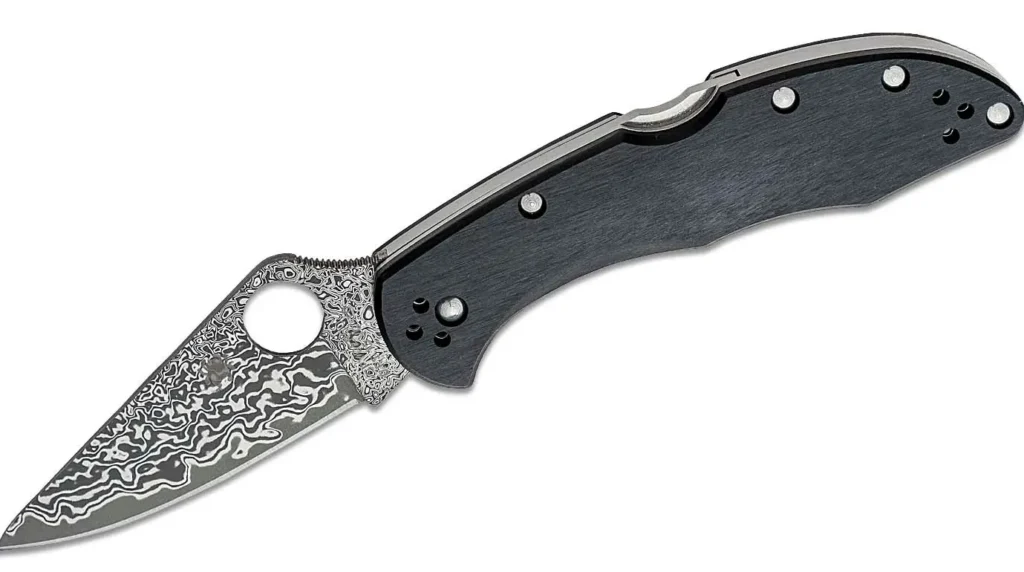
The Spyderco Delica 4 Folding Knife is a prime example of craftsmanship combining functionality and elegance. This version is exclusively for KnifeCenter and has black Pakkawood scales and a Damascus steel blade. The handle of this knife features full stainless steel liners, a stainless steel backspacer, and scales machined from black Pakkawood. This unique material combines a phenolic laminate’s durability and stability with natural wood’s beauty.
Mahogany Pakkawood Delica
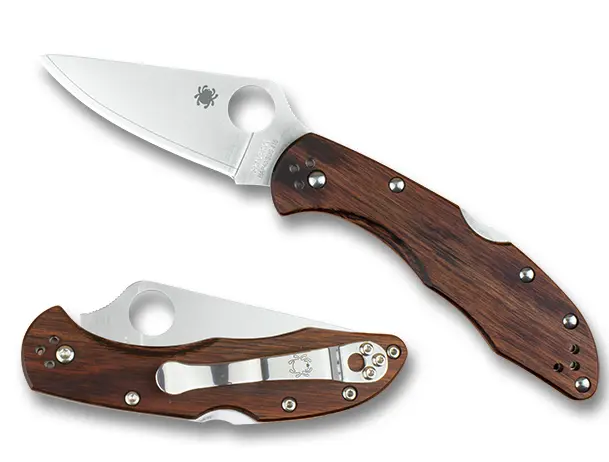
Another variant, the Delica 4 Mahogany Pakkawood HAP40/SUS410 Exclusive, is a limited edition with a laminated HAP40/SUS410 blade and stunning mahogany Pakkawood scales. The blade’s three-layer laminate construction comprises HAP40 and SUS410 steels, with HAP40 known for its exceptional toughness and high abrasion resistance. The handle is machined from mahogany Pakkawood, adding a touch of class to this functional tool.
These knives are not just works of art but fully functional tools, with features like a sturdy back lock mechanism and four-position pocket clip. The combination of Pakkawood with high-quality steel makes these knives beautiful and practical, reflecting the essence of Pakkawood’s application in cutting tools.
Is Pakkawood Real Wood?
Pakkawood has often been compared to real wood, and many wonder if it’s genuine wood or an artificial composite. Let’s delve into its composition and compare it with real wood.
Composition
Pakkawood is a composite material made from layers of wood veneer impregnated with phenolic thermosetting resins. These layers are then compressed under high heat and pressure to form a dense, stable, and moisture-resistant material.
Comparison with Real Wood
Pakkawood doesn’t crack, warp, or absorb moisture unlike natural wood. It combines the beauty of real wood with the durability of plastic. While it may look and feel like real wood, its composition includes synthetic elements that enhance its properties.
Is Pakkawood Real Wood?
In essence, Pakkawood is not entirely real wood. It’s a blend of real wood and synthetic materials with unique characteristics. It retains the aesthetic appeal of natural wood but adds the stability and resistance of synthetic materials. This combination makes Pakkawood an ideal choice for applications where the beauty of wood is desired, but the strength and durability of synthetic materials are needed.
Pakkawood in the Market
Pakkawood has become ubiquitous in many kitchens, finding its way into everything from knife handles to serving spoons and bowls. Its popularity stems from its unique blend of aesthetics and functionality, making it a preferred choice for many manufacturers and consumers.
Pricing and Availability
Pakkawood’s pricing varies depending on the product and brand. It’s commonly found in high-quality Japanese knives, such as Shun, whose strength, aesthetic refinement, and waterproof qualities are prized. The variety of colors and textures available in Pakkawood also adds to its appeal, allowing manufacturers to create products that cater to different tastes and preferences.
Consumer Preferences
Consumers are drawn to Pakkawood for its resemblance to natural wood and enhanced durability. Pakkawood doesn’t crack, split, or warp, unlike natural wood, making it ideal for kitchen applications. Its resistance to heat and water adds to its attractiveness, and many prefer it over polymers or fiberglass for its hand feel and aesthetic appeal.
Popular Brands
Shun is a well-known brand that utilizes Pakkawood in their knife handles. They even offer a variety of shades, including a light, blonde Pakkawood, adding diversity to their product line. The ability to dye Pakkawood during fabrication allows for a fantastic internal diversity of color, making each piece unique.
How to Care for Pakkawood Products
Pakkawood products are known for their durability, but proper care can ensure longevity and preserve appearance. Here’s a guide to maintaining Pakkawood products:
Cleaning
Though Pakkawood is water-resistant, it’s not waterproof. Therefore, it’s best to hand wash Pakkawood utensils quickly with mild soap. Avoid soaking or completely submerging them in water, and always dry them with a soft towel immediately after washing.
Storage
Proper storage is essential to prevent any damage to Pakkawood products. Avoid putting them in the dishwasher, as this can affect the knives’ handle and blade integrity.
Longevity
Over time, Pakkawood handles may get dry. Applying mineral oil with a soft cloth now and then can maintain an appropriate sheen and luster. If mineral oil is unavailable, a few drops of coconut oil can restore the Pakkawood’s original finish.
Environmental Impact of Pakkawood
Pakkawood, as a composite material, brings up questions about its environmental impact and sustainability. While it combines wood’s beauty with synthetic materials’ durability, it’s essential to understand its ecological footprint.
Sustainability
Pakkawood is made from layers of wood veneer and phenolic thermosetting resins. The wood used in Pakkawood is often sourced from sustainable forests, and the manufacturing process can be controlled to minimize waste. However, the use of synthetic resins raises questions about its overall environmental friendliness.
Ecological Impact
The manufacturing process of Pakkawood involves high heat and pressure, which can consume significant energy. Additionally, the resins used may not be biodegradable, posing potential long-term environmental concerns.
Environmental Regulations and Green Practices
While specific information about Pakkawood’s environmental regulations and green practices is limited, it’s worth noting that many manufacturers are moving towards eco-friendly alternatives and sustainable practices. The choice of wood, resins, and manufacturing processes can all be optimized to reduce environmental impact.
Pakkawood vs. Other Materials
Pakkawood offers unique benefits, but how does it compare to other materials like real wood, plastic, or other synthetic materials? Let’s explore the pros and cons.
Pakkawood vs. Real Wood
- Pros: Pakkawood is more durable, cracking-resistant, and waterproof than real wood. It retains the aesthetic appeal of wood but adds stability.
- Cons: Unlike real wood, Pakkawood involves synthetic materials, which may not be as environmentally friendly.
Pakkawood vs. Plastic
- Pros: Compared to plastic, Pakkawood offers a more natural feel and appearance. It’s also more heat resistant.
- Cons: Plastic may be more easily recyclable, while Pakkawood’s composite nature may complicate recycling processes.
Pakkawood vs. Other Synthetic Materials
- Pros: Pakkawood provides a unique blend of natural wood aesthetics with synthetic durability, setting it apart from entirely synthetic materials.
- Cons: Other synthetic materials may offer more consistent properties and could be designed with specific environmental considerations.
DIY Projects with Pakkawood
Pakkawood’s unique blend of wood and resin has made it a popular choice for various DIY projects and crafting endeavors. Its durability, aesthetic appeal, and versatility make it an ideal material for creative minds.
Projects and Creativity
Pakkawood is used in various products, from tool handles to cooking spoons and spatulas. Its eco-friendly nature and minimal energy consumption in production make it a preferred choice for crafting.
Tool Handles
Pakkawood’s strength and lightweight properties make it an excellent material for tool handles. Its resistance to weather conditions adds to its appeal for outdoor tools.
Tabletop Items
For outdoor furniture, Pakkawood’s resistance to weather conditions makes it a preferred material for tables, chairs, and other similar items.
Pool Cues
A Pakkawood cue lasts 3-5 times longer than regular cues, delivering a better playing experience and long-term savings.
Cooking Spoons and Spatulas
Pakkawood’s heat resistance and non-allergenic properties make it a healthier alternative to plastic in cooking utensils.
Popular Brands
Big brands like Shun, Miyabi, Cangshan, and Tuo Cutlery use Pakkawood material in their handles, reflecting its popularity and functionality.
Historical Background of Pakkawood
The historical background of Pakkawood is intertwined with the evolution of composite materials and the pursuit of blending natural beauty with functional durability.
Cultural Significance
Pakkawood’s cultural significance lies in its ability to mimic the appearance of traditional hardwoods while offering superior durability. It represents a modern approach to craftsmanship, where tradition meets innovation.
Historical Usage
Historically, hardwood veneers have been used in fine furniture and musical instruments. Pakkawood builds on this tradition by laminating various hardwood veneers, creating a strong, flexible composite wood.
Tradition and Heritage
Pakkawood’s use in high-quality kitchen knives and other utensils reflects a tradition of excellence in craftsmanship. Its application in modern kitchens, where function and aesthetics complement each other, signifies a continuation of this heritage.
Pakkawood in Culinary Arts
Pakkawood’s unique characteristics make it popular in professional kitchens, restaurants, and culinary schools. Here’s why:
Durability: Pakkawood is known for its durability, making it suitable for heavy-duty use in professional kitchens.
Aesthetics: The beautiful appearance of Pakkawood adds a touch of elegance to kitchen tools, making it a chef’s choice for high-end utensils.
Hygiene: Pakkawood’s non-porous nature makes it resistant to bacteria, an essential feature in professional cooking environments.
Versatility: Pakkawood can be crafted into various shapes and sizes, allowing culinary experts to have tools tailored to their needs.
Sustainability: The responsible sourcing and sustainable practices associated with Pakkawood align with the growing trend of environmental consciousness in the culinary arts.
Culinary Education: Many culinary schools incorporate Pakkawood tools in their training, appreciating its functional and aesthetic qualities.
Customer Reviews and Testimonials
Pakkawood products have entered homes, restaurants, and workshops worldwide. But what do people think about them? Let’s dive into customer satisfaction and product ratings.
Positive Feedback:
- Durability: Many customers praise Pakkawood for its long-lasting nature. It doesn’t wear out easily, and its resistance to water and stains makes it a favorite.
- Aesthetic Appeal: The unique blend of wood and resin creates a beautiful pattern many find appealing. It adds a touch of elegance to kitchen utensils and other products.
- Ease of Maintenance: Customers appreciate that Pakkawood products are easy to clean and maintain, making them practical for everyday use.
- Eco-Friendly: Those conscious of the environment often commend Pakkawood for being sustainable, aligning with green practices.
Negative Feedback:
- Price: Some consumers find Pakkawood products expensive, especially compared to ordinary wood or plastic alternatives.
- Inconsistency in Patterns: A few customers have noted that the patterns and colors can vary, leading to inconsistencies in appearance.
- Availability: Limited availability in some regions has been a concern for those looking to purchase Pakkawood products.
Online Reviews and Consumer Reports: Various online platforms provide detailed reviews and ratings for Pakkawood products. These reviews offer valuable insights into the products’ quality, functionality, and aesthetics.
Where to Buy Pakkawood Products
Finding the right place to buy Pakkawood products can be a breeze if you know where to look. Here’s a guide to help you find the perfect Pakkawood item:
E-commerce Giants: Websites like Amazon and eBay often carry a wide range of Pakkawood products, from kitchen utensils to crafting materials.
Specialty Shops: Online stores specializing in woodworking or culinary tools may offer a curated selection of Pakkawood items.
Brand Websites: Manufacturers of Pakkawood products often sell directly through their websites, providing detailed information and customer support.
Mytoque
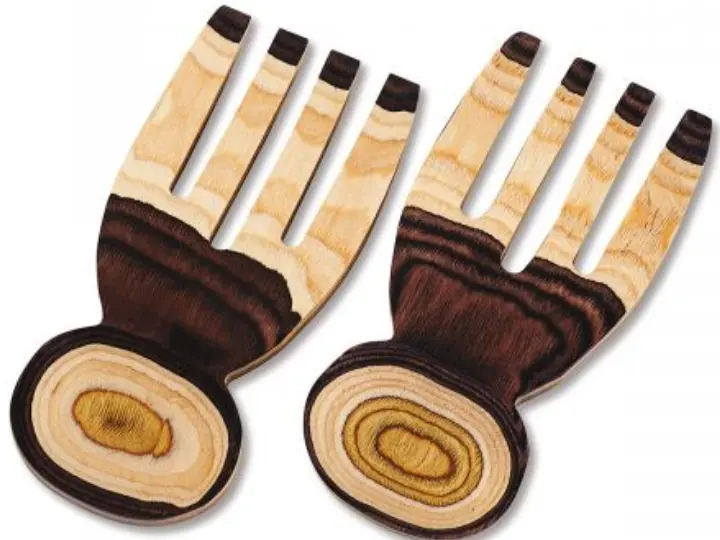
Source: https://www.mytoque.com/products/salad-claws-natural
The page on MyToque’s website features Island Bamboo Pakkawood Salad Claws, priced at $14.99 USD. The product is made from 100% premium Pakkawood and is crafted with intense heat, pressure, and detail, resulting in a moderately heavy and extremely durable product. Pakkawood is a colorful water-resistant material that adds style to the kitchen. The page also provides care instructions for the product, such as not soaking it and using warm water and soap for cleaning.
Amazon

Source: https://www.amazon.com/pakkawood-utensils/s?k=pakkawood+utensils
Page on Amazon for Pakkawood utensils. It displays various products related to Pakkawood utensils, including spoons, forks, knives, and other kitchen tools made from Pakkawood.
imarku
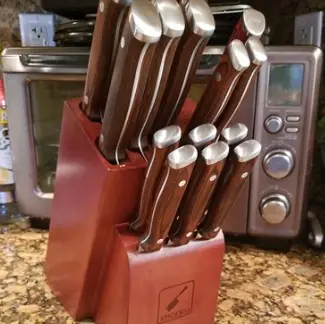
Source: https://imarku.net/
Imarku is a brand committed to offering professional-quality kitchen knives, cookware, and other culinary tools. They have research institutes and design centers in the United States, France, Japan, and Germany. The website showcases their products, including knife sets, cookware, and tools, and features over 19,000 5-star reviews. They also offer chef’s blogs.
Walmart
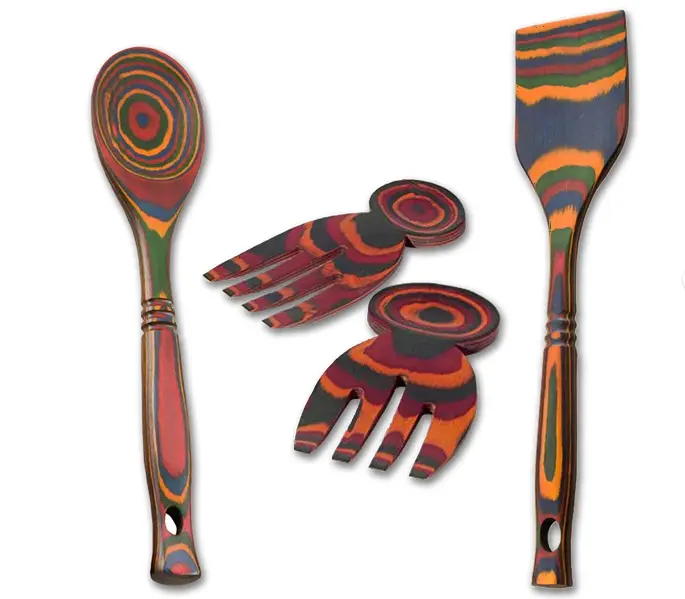
Source: https://www.walmart.com/c/kp/pakkawood-utensils
Walmart, one of the largest retail chains, likely offers a variety of Pakkawood utensils, including spoons, forks, knives, and other kitchen tools. You can expect to find products from different brands at various price points. Walmart’s online platform often provides customer reviews, ratings, and detailed product descriptions, helping customers make informed purchasing decisions.
Fieldtorq
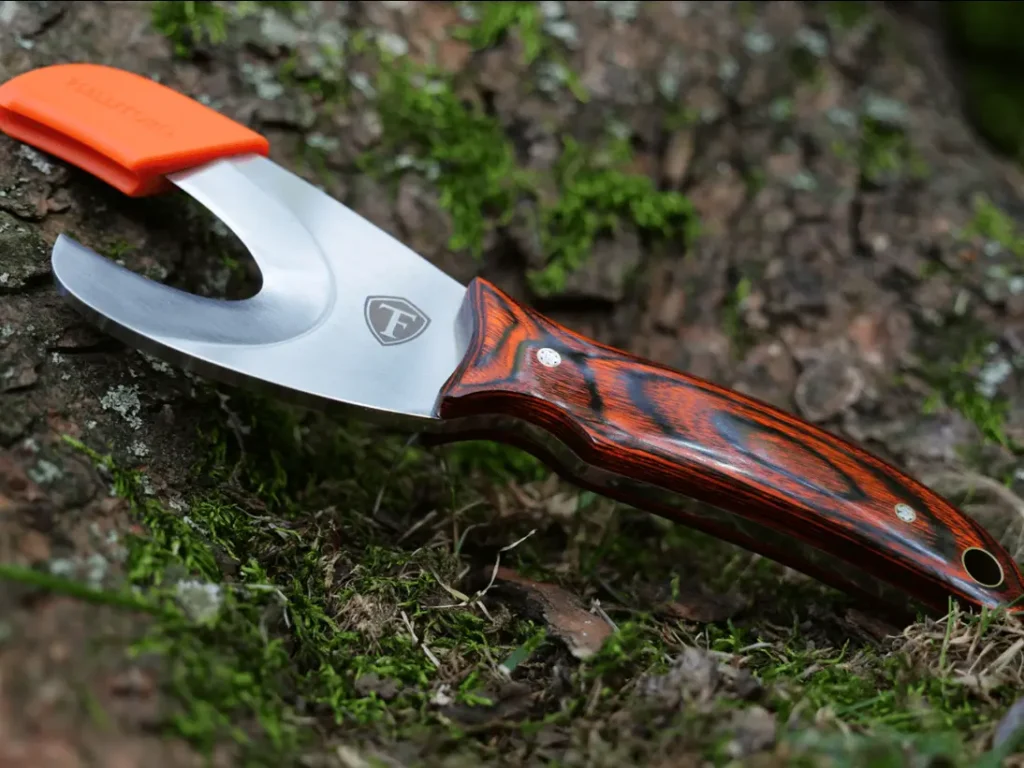
Source: https://fieldtorq.com/product/fieldtorq-pakkawood/
This page on FieldTorq’s website showcases the FieldTorq® Pakkawood, priced at $99.99. The product is similar to laminated gun stocks and is non-slip in wet conditions. The beautiful wood grain handles are held in place with attractive mosaic pins, combining beauty and performance. The FieldTorq® Pakkawood field dressing kit includes 8Cr14MoV High Carbon Stainless Steel, a heavy-duty ballistic nylon sheath, a two-stage ceramic sharpener, Torq Assist™, and an instructional brochure. It comes with a lifetime warranty and a cut-above guarantee.
Etsy
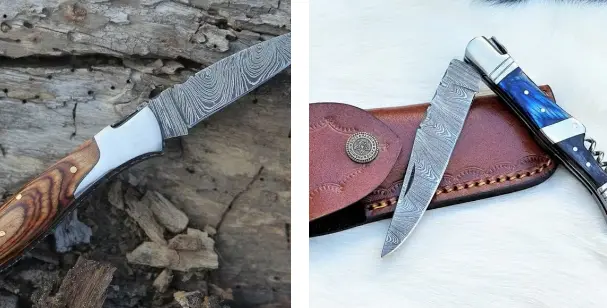
Source: https://www.etsy.com/market/pakkawood
Etsy offers various Pakkawood products, from kitchen utensils to unique handmade pieces. Etsy’s Pakkawood market is rich with unique and custom products, often available at discounted prices. Whether looking for cooking utensils or personalized gifts, Etsy’s selection of Pakkawood items offers something for everyone.
Cocktailingdom
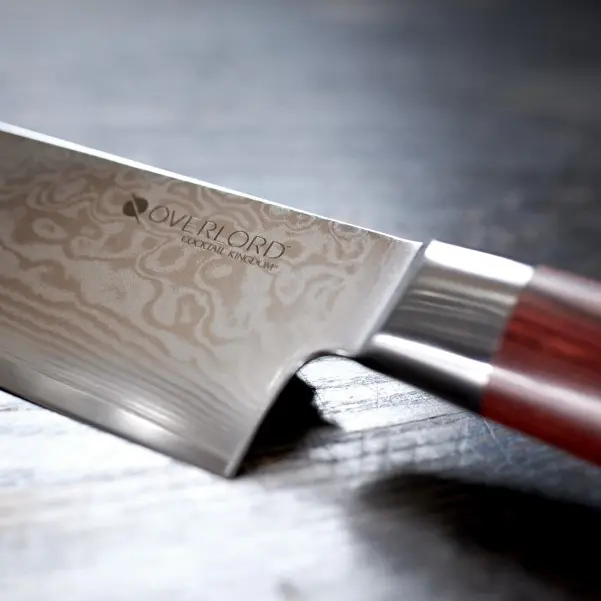
Source: https://www.cocktailkingdom.com/overlord-pakkawood-chefs-knife
Cocktail Kingdom offers the Overlord™ 8” Chef’s Knife with a Pakkawood Handle for $89.99. This all-purpose chef’s knife is designed for various kitchen tasks, including slicing, dicing, chopping, and deboning. The durable Pakkawood handle is sealed and resists moisture, providing a comfortable grip.
Buying Tips:
- Compare Prices: Shop for the best deal, considering online and in-store options.
- Read Reviews: Customer reviews can provide insights into the quality and functionality of the product.
- Consider the Source: If sustainability is a concern, look for sellers who adhere to ethical and eco-friendly practices.
Whether you prefer the convenience of online shopping or the tactile experience of a retail store, there are plenty of options to purchase Pakkawood products. With a little research and consideration, you can find the perfect Pakkawood item to suit your needs and preferences.
Future of Pakkawood
Pakkawood, a blend of wood and resin, has been gaining popularity for its unique appearance and durability. But what does the future hold for this composite material?
Technological Advancements
- Improved Manufacturing Processes: With advancements in technology, the manufacturing process of Pakkawood could become more efficient and precise. This could lead to higher quality products with more intricate designs.
- Sustainable Practices: As sustainability becomes a priority, innovations in Pakkawood manufacturing could focus on using eco-friendly resins and responsibly sourced wood. This would align with the growing demand for sustainable products.
- Smart Integration: Imagine Pakkawood products with integrated smart technology. The possibilities are endless: kitchen utensils with temperature sensors or furniture with built-in charging ports.
Industry Experts and Innovators
- Collaboration with Designers: Pakkawood manufacturers could create exclusive collections that combine functionality with artistry by collaborating with renowned designers.
- Research and Development: Investing in R&D could discover new applications for Pakkawood, expanding its use beyond kitchenware and furniture.
- Customization: With 3D printing and other customization technologies, consumers can design their Pakkawood products, tailoring them to their needs and tastes.
Future Trends
- Personalized Products: The trend towards personalization could see Pakkawood products being customized to individual preferences, from color to shape and functionality.
- Eco-Friendly Options: As consumers become more conscious of the environment, Pakkawood products that adhere to green practices could become more popular.
- Integration with Modern Living: Pakkawood’s aesthetic appeal and durability make it suitable for modern living. Expect to see more Pakkawood products in contemporary homes and commercial spaces.
Final Thoughts
Pakkawood, a unique blend of wood and resin, has evolved from a composite material to a sought-after choice for various products. With endless possibilities and innovations, Pakkawood represents craftsmanship, innovation, and sustainability, showcasing human creativity and the pursuit of excellence. The future of Pakkawood is promising, with exciting chapters ahead.
